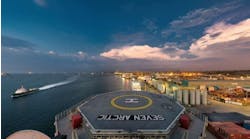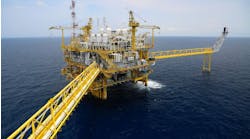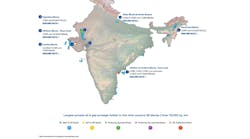Leonard Le Blanc
Drill where?
Ten years ago, the suggestion that drilling operations might someday have to be carried out on the seafloor brought a laugh and knowing look. Today, no one laughs. Producers and drilling contractors are confronting serious challenges in ultra-deepwater.The proposed solutions for surface-to-seabed drilling linkage and maintaining a drilling fluid circuit are either robust, meaning big iron, large connections, and more weight, or complex, with fluid routing and treatment, lift power, and pipe stripping. Meanwhile, the costs mount.
Producer asset management committees charged with chasing deepwater reserves are beginning to look disparagingly at the proposed solutions. If oil and gas reservoirs in ultra-deepwater were not so large, there would be a great temptation to chuck it all. Despite dire appearances, the industry has been in this position before - twice.
- In the 1950s, oil-prone formations were turning up on seismic sections, beyond the water depth range of jackup drilling units and submersibles. Moving the BOP stack to the seafloor and using a riser for fluid returns was almost too revolutionary.
- As late as the mid-1980s, subsea wellheads were considered the last choice in development solutions. Not until producing water depths exceeded saturation diving capabilities did the industry get serious about re-designing seafloor equipment for intervention by remotely operated vehicles.
The more radical step would be moving drill pipe make up, break out, and rotation to the seafloor. Drillstring breakout under water brings up environmental issues - not a minor hurdle. There are alternatives, however, that might be workable:
- To preserve the jointed drill pipe process, a method could be developed to rotate pipe on the seafloor using rotating injectors or hydraulic rams on a turntable, thereby eliminating the kelly joint. Such a step would keep pipe racking, make up, and break out at the surface, and the drillstring could then be fed to the seafloor rotary as needed.
- Conventional methods could be used to drill and case down to surface casing depth, eliminating most of the geotechnical risks. Afterwards, a coiled tubing assembly, reeled on the surface or seabed, with seafloor injectors, could be used to drill to formation and complete the wells.
There are no readily apparent solutions in ultra-deepwater - just costly or risky ones. For example, pumping drilling fluid back to the surface from the seabed, or closing the drilling fluid loop at the seabed, would require the presence of 2,000-4,000 hp mud pumps on the seafloor. What's next? Maybe it's time to look harder at a complete re-design of the drilling process for ultra-deepwater.
Anyone long for dry land simplicity - and much smaller reserves?
Offshore benchmarks
In order to benchmark significant quantitative and qualitative performances in the global offshore petroleum industry, Offshore Magazine will begin publishing a compilation of accomplishment - at the surface, subsea, and downhole.Achievements and advancements in geosciences, drilling, subsea, downhole, development, fabrication, installation, production, pipelining, and other types of transportation offshore - will be accepted or solicited.
Individuals, organizations, and companies are asked to submit information on significant achievements by E-mail ([email protected]) or ([email protected]) or Fax: US (713) 963-6296. Information needed includes a description of the achievement, technical or quantitative specifications, the responsible party, date of event, place of event, special conditions surrounding the achievement, and contact information. As the information is compiled, a clear and fair means of comparison will be developed.
Offshore Magazine will publish the list of the record achievements regularly, so that the industry will have benchmarks by which to compare performances.
Copyright 1998 Oil & Gas Journal. All Rights Reserved.


